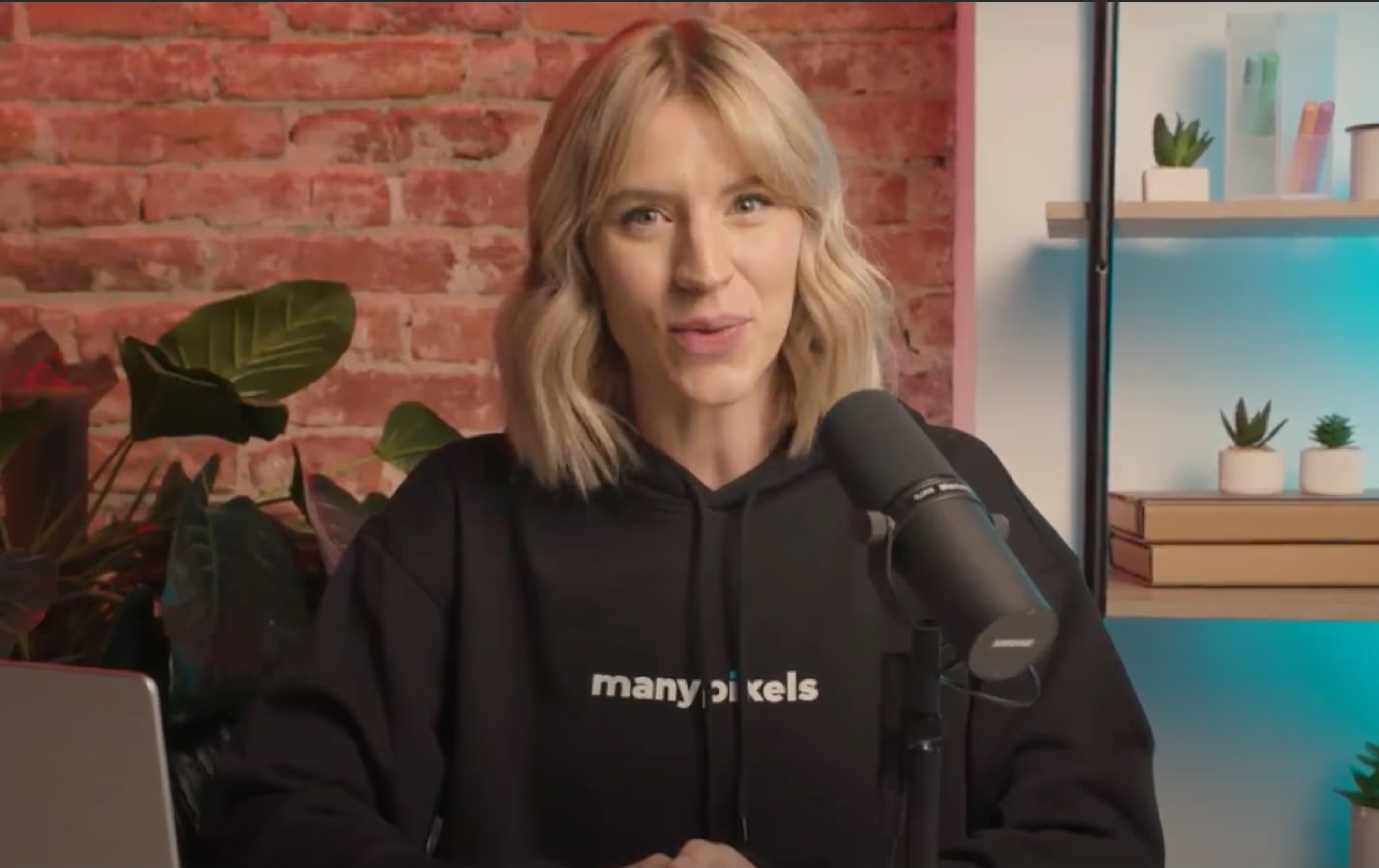
.jpg)
The Power of Ecommerce Graphic Design: Look Good, Sell More
Think of your ecommerce store as a stage and graphic design as the spotlight. The right visuals don’t just make your shop look good, they make it unforgettable. This article shows you how to turn browsers into buyers with smart, stylish design moves.

.svg)
Table of Contents

If your online store is falling flat, it’s time to focus on ecommerce graphic design. Picking colors or adding a logo won’t cut it. A successful online shop combines visually appealing design with a high-quality layout to guide visitors smoothly from browsing to purchase.
Why Graphic Design Is Important For Your Ecommerce Business
Understanding why graphic design is important for your ecommerce business goes beyond appearances. Ecommerce graphic design creates an online shopping experience that is intuitive, engaging, and memorable.
The design of your store determines whether visitors stay, explore, or leave. A cluttered or outdated ecommerce site design signals neglect, while a polished, user-friendly layout conveys professionalism and attention to detail. Just take a look at this example from AllBirds.
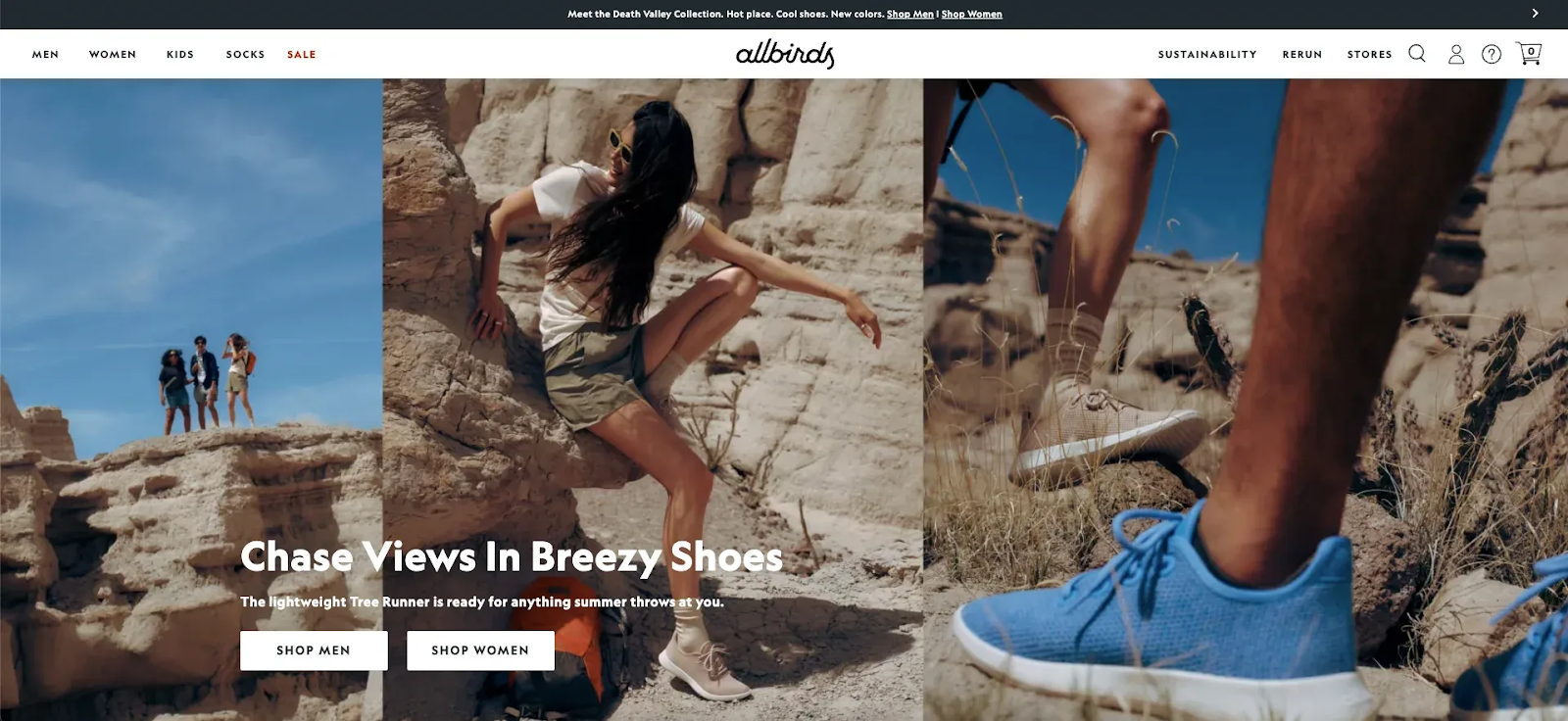
First impressions count.
On a homepage or landing page, visuals speak for your brand. Well-crafted banners, crisp product photography, and organized layouts capture attention and establish credibility. Experienced ecommerce graphic designers arrange these elements to naturally guide visitors toward your call to action.
Navigation is key.
Menus must be clear and category pages uncluttered. Thoughtful design elements and logical layout make it simple for shoppers to find what they need. High-contrast buttons and readable fonts improve user experience and simplify the path to purchase.
Visuals should tell your brand story and persuade subtly.
Product shots, lifestyle images, and short videos help buyers imagine your products in their lives. Each landing page and visual reinforces your brand identity, connecting emotionally and logically with visitors.
{{WEBSITES_PORTFOLIO="/dev/components"}}
Consistency strengthens recognition.
Your logo design, color schemes, fonts, and icons should create a unified environment. Interactive elements or subtle animations can add interest, but must support your primary goal: selling. Your commerce site also reflects your broader digital marketing strategy. Cohesive visuals across emails, social posts, and ads build trust and make your brand memorable.
How Design Impacts Conversions
Shoppers make judgments in seconds. If a site feels outdated or inconsistent, they click away. But when design elements are clear and professional, visitors stay longer, engage more, and ultimately convert. Consider how these aspects influence behavior:
- Clarity: Clean product photos, logical layouts, and easy-to-scan text help shoppers make decisions quickly.
- Trust: A consistent brand identity with professional graphics signals reliability, which is crucial for first-time buyers.
- Guidance: Strategic calls to action placed throughout landing pages nudge visitors to take the next step, whether it’s signing up, adding to cart, or checking out.
- Delight: Small, thoughtful touches like custom icons, engaging banners, or interactive effects create positive emotions that shoppers associate with your brand.
Here’s a great example from Blume that captures pretty much all 4 points.
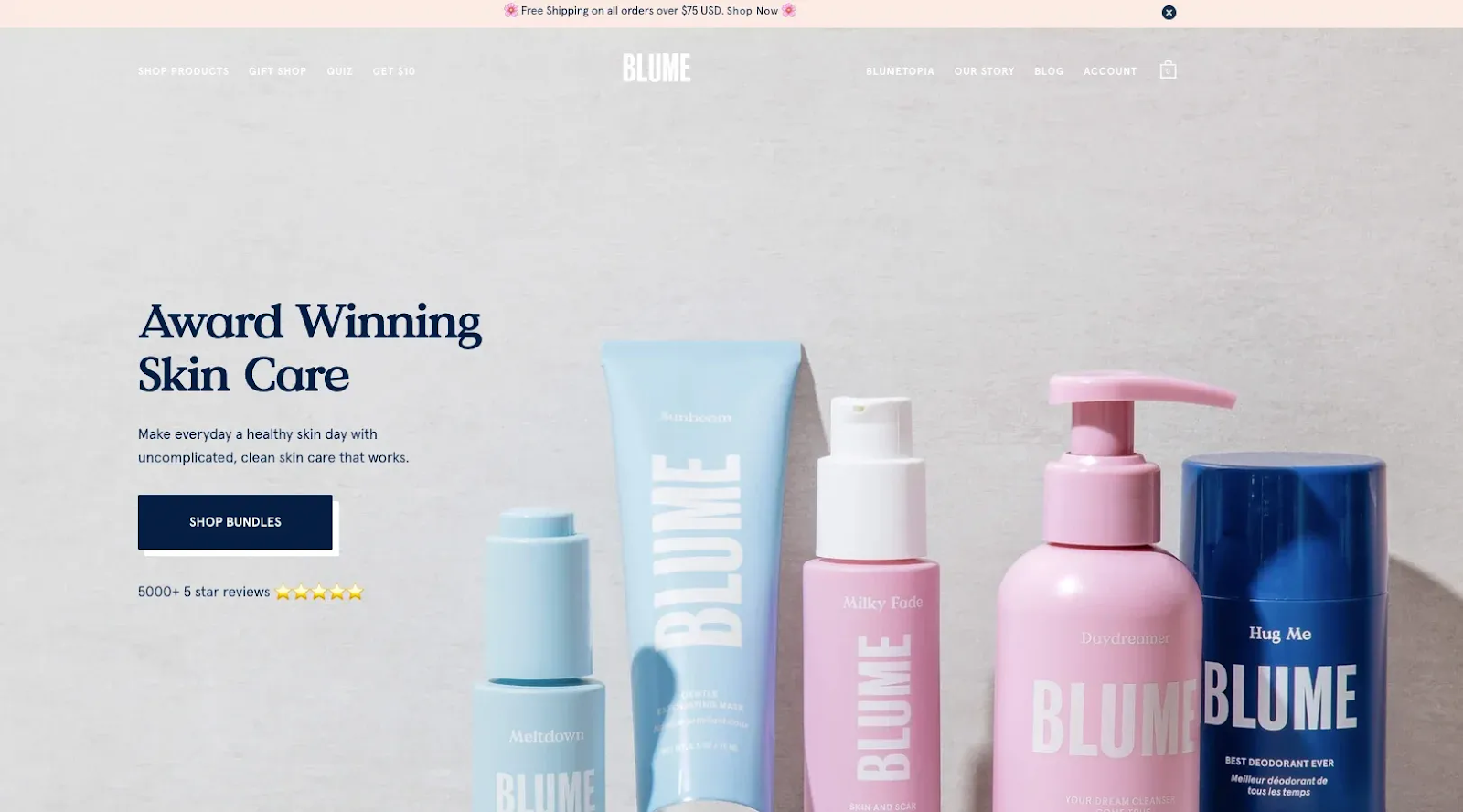
Ecommerce Graphic Design Trends
Ecommerce evolves fast, and your design should too. Here are key ecommerce graphic design trends shaping modern online stores:
- Personalization is essential. AI-driven features can display custom product recommendations or dynamic visuals based on visitor behavior, creating a tailored online shopping experience that increases engagement and conversions.
- Immersive 3D and augmented reality visuals are gaining popularity. Shoppers can see products realistically before buying, from 3D furniture models to AR try-on features for fashion, boosting confidence and creating memorable interactions.
- Motion graphics and micro-interactions keep users engaged. Animated buttons, hover effects, and subtle loading animations enhance user experience, directing attention to important calls to action without overwhelming visitors.
- Sustainability influences design. Earthy tones, transparent supply-chain visuals, and optimized lightweight graphics communicate responsibility while improving performance. Consumers respond positively to eco-conscious brands that embrace environmental graphic design.
- Minimalist, mobile-first layouts remain essential. Clean single-column designs, legible fonts, and high-contrast buttons ensure your online shop is user-friendly on any device. Dynamic branding, like seasonal or adaptive logos, keeps the experience fresh without confusing visitors.
- Typography matters. Bold, expressive type can highlight promotions or categories, while clear sans-serif fonts maintain readability across screens. Effective typography enhances brand identity and complements other design elements.
- Integrating high-quality visuals with digital marketing is another trend. Designers now consider how banners, product images, and layouts appear across social media, email, and retargeting campaigns. Consistent visuals ensure your brand identity is strong and recognizable, reinforcing trust with potential customers.
Practical Tips For Your Store
Ask one practical question before you make any change: Why graphic design is important for your ecommerce business?
Treat a design audit like detective work. Start with the pages that earn the most traffic: homepage, category, product, and checkout. Score each page for clarity, load time, imagery, CTA placement, and mobile behavior. You will spot quick wins fast. Swap a hero image, adjust a CTA color, or tighten product copy, then measure the impact for a week.
Design playbook: three experiments to run this month:
- Visual hierarchy test. Pick a high-traffic landing page and simplify it. Make the primary CTA more prominent, remove competing elements, and watch the add-to-cart rate.
- Image context test. Replace a studio shot with a lifestyle image showing the product in use. This often converts better because potential customers can see how the product fits into their lives.
- Speed and compression test. Optimize images, defer non-critical scripts, and compress assets. Faster pages reduce bounce and keep shoppers engaged on mobile devices.
Small details matter. Microcopy, shipping tags, and clear return information placed close to your CTAs lowers hesitation. Keep a consistent color palette so buttons and links mean the same thing across the site. Prioritize readable typography and maintain clear visual order: headlines, product titles, prices, and action buttons should be read in a single glance. Look at how Cabaiia does it with their bag customization page.
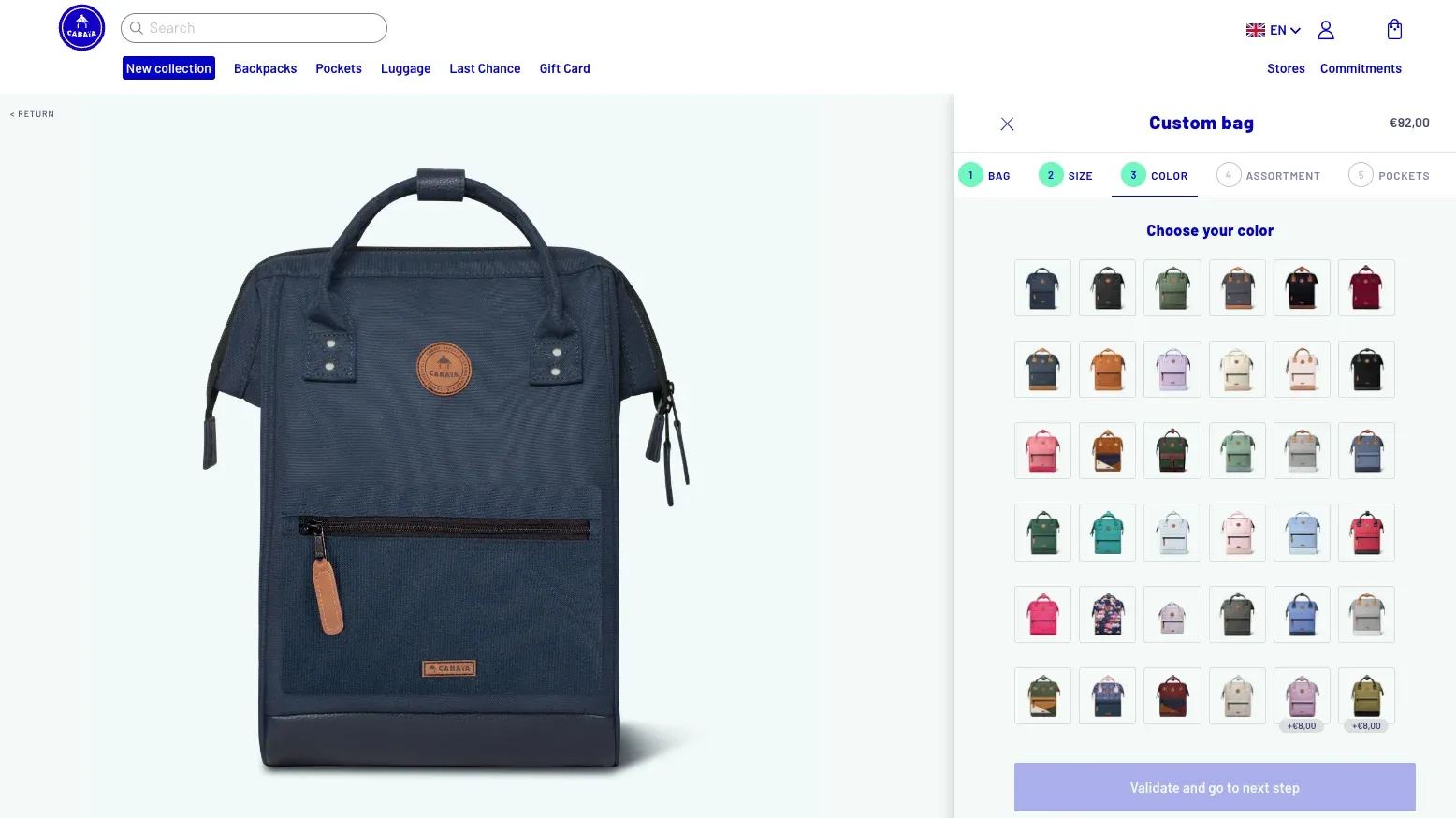
Keep an eye on ecommerce graphic design trends, but do not chase every shiny idea. Prioritise experiments that move a metric. Track bounce rate, time on page, add-to-cart, and checkout completion. If a change lifts one of those KPIs, scale it.
If you do not have an in-house ecommerce graphic designer, consider short-term support to run these tests. Contractors can deliver high-quality visuals, iterate quickly, and hand you the templates your team needs to scale.
As you work through these improvements, it helps to pause and ask yourself the core question: why graphic design is important for your ecommerce business? Framing changes around this question keeps every decision tied to growth and customer experience.
Closing Thoughts
You’ve seen how ecommerce graphic design can shape trust, guide visitors, and drive conversions. Professional design is what turns a functional commerce site into a brand experience people remember. From consistent color schemes to smooth navigation and eye-catching calls to action, it’s the difference between a store that feels generic and one that feels unforgettable.
For businesses ready to elevate their online shop, ManyPixels offers on-demand access to experienced ecommerce graphic designers. The global team can create everything from logo design and color palettes to optimized landing pages and high-quality visuals that work seamlessly across desktop and mobile devices.
It’s a flexible, reliable solution to keep your online shopping experience polished, persuasive, and always on-brand.
Zach is a content and SEO strategist with an affinity for cars, tech, and animals. He runs a SaaS content agency, and when he's not typing, he runs his small-scale farm at home.
A design solution you will love
Fast & Reliable
Fixed Monthly Rate
Flexible & Scalable
Pro Designers
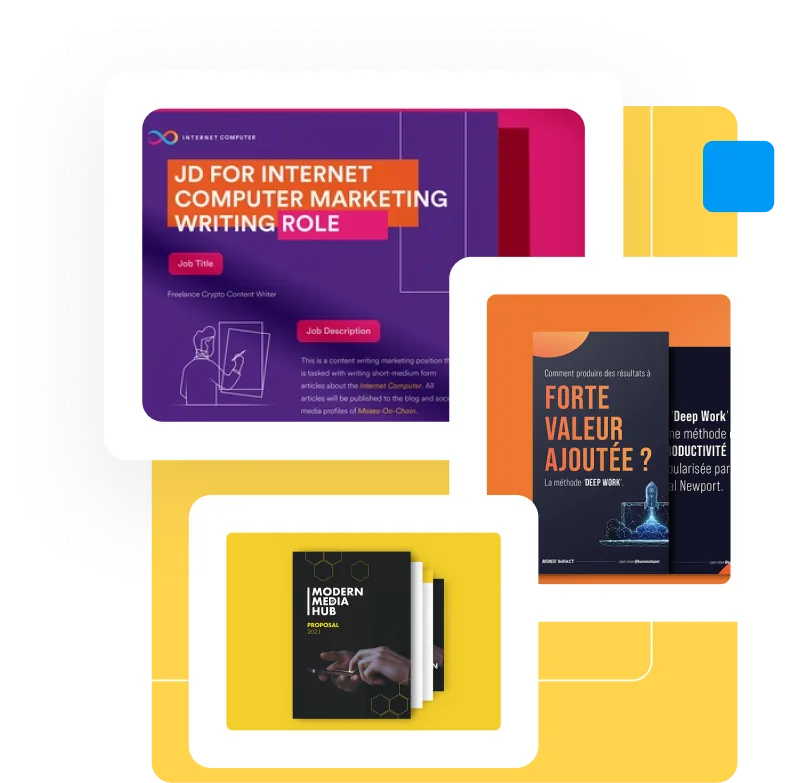



.jpg)
